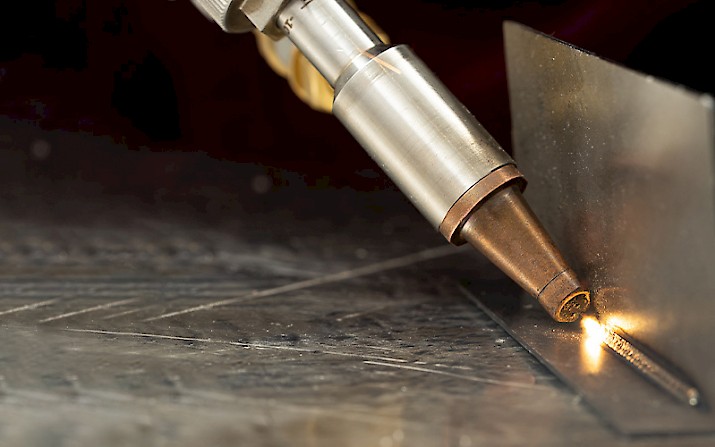Advanced Welding WPS: Tailoring Specifications for Facility Jobs
Advanced Welding WPS: Tailoring Specifications for Facility Jobs
Blog Article
The Ultimate Overview to Welding WPS Procedures: A Thorough Summary for Welders
In the intricate world of welding, Welding Procedure Requirements (WPS) act as the backbone of guaranteeing top quality, uniformity, and safety in welding operations. Comprehending the nuances of creating, implementing, and keeping an eye on WPS procedures is vital for welders wanting to boost their craft and meet market criteria. As we dig into the different elements of a WPS and check out the details of credentials and certification, we will reveal the important role these procedures play in the realm of welding. Allow's get started on a trip to untangle the intricacies and value of WPS treatments in welding techniques.
Value of WPS Procedures
Comprehending the importance of Welding Procedure Requirements (WPS) treatments is vital for guaranteeing the high quality and integrity of bonded frameworks. WPS procedures act as a roadmap for welders, outlining the needed steps, criteria, and materials required to achieve an audio weld. By adhering to WPS standards, welders can ensure uniformity in their work, resulting in dependable and structurally sound welds.
One of the key reasons WPS procedures are essential is their duty in preserving weld top quality and stability. Following the defined welding parameters and strategies described in the WPS aids avoid flaws such as porosity, cracking, or incomplete blend, which can jeopardize the toughness and sturdiness of the weld. Additionally, WPS treatments are essential for making certain compliance with sector standards and codes. By complying with recognized WPS guidelines, welders can show that their work satisfies the necessary demands for safety and security and high quality, giving assurance to customers, inspectors, and regulative bodies. Fundamentally, the significance of WPS treatments can not be overemphasized, as they are fundamental to accomplishing regular, premium welds that fulfill industry requirements and requirements.

Parts of a WPS
A Welding Procedure Specification (WPS) typically comprises crucial parts that detail the particular requirements for implementing a weld, guaranteeing uniformity and top quality in the welding procedure. The essential components of a WPS consist of important variables such as base steels, filler steels, preheat and interpass temperature levels, welding procedures, protecting gases, welding positions, and post-weld warmth treatment needs.
Base steels refer to the products being joined, while filler metals are used to load the space in between the base metals throughout welding. Preheat and interpass temperatures are essential for regulating the heat input and protecting against problems like fracturing or distortion. The welding process details the details strategy to be utilized, whether it's gas metal arc welding (GMAW), protected metal arc welding (SMAW), or one more approach. Shielding gases secure the weld pool from atmospheric contamination. Welding placements define the positionings in which welding can be performed. Post-weld warm treatment might be essential to ease stress and anxieties and enhance the weld's properties. A comprehensive understanding of these parts is essential for developing find more information a comprehensive and efficient WPS.

Certification and Qualification
Having actually developed the essential components of a Welding Procedure Specification (WPS), the focus now shifts towards the important elements of certification and qualification in welding techniques.

Accreditation, on the other hand, is the official recognition of a welder's credentials by a pertinent qualification body or organization. Welding qualifications are generally based on the certain welding procedures, products, and positions a welder is certified to collaborate with. Holding a legitimate welding accreditation demonstrates that a welder meets market requirements and is competent to perform welding jobs to the required specs.
Creating a WPS
To establish a Welding Procedure Spec (WPS) that meets sector requirements, careful factor to consider of welding processes, products, and functional parameters is necessary. The initial action in developing a WPS is to identify the welding procedure to be used, such as gas steel arc welding (GMAW) or shielded metal arc welding (SMAW)

Applying and Keeping Track Of WPS
Upon settling the comprehensive Welding Procedure Specification (WPS) that diligently details welding procedures, materials, functional criteria, and quality assurance procedures, the focus shifts to effectively carrying out and monitoring the recognized treatments. Execution includes making certain that all welders involved in the project are familiar with the WPS and follow it thoroughly throughout the welding procedure. Effective implementation and monitoring of the WPS are critical for making certain the stability, stamina, and security of the welded joints, inevitably adding to the total success of the welding task.
Conclusion
To conclude, understanding and following Welding Treatment Requirements (WPS) is vital for welders click to find out more to make certain high quality, uniformity, and safety and security in their job. By understanding the components of a WPS, getting proper qualifications and qualifications, producing thorough treatments, and executing and monitoring them properly, welders can boost their skills and efficiency in welding practices. Following WPS treatments is crucial for generating premium welds and meeting sector requirements.
In the elaborate globe of welding, Welding Treatment Requirements (WPS) offer as the foundation of making sure high quality, uniformity, and safety in welding operations. The welding procedure details the details method to be used, whether it's gas steel arc welding (GMAW), Extra resources protected metal arc welding (SMAW), or one more approach.To establish a Welding Treatment Spec (WPS) that meets market requirements, cautious factor to consider of welding procedures, materials, and operational criteria is necessary. The very first action in creating a WPS is to identify the welding procedure to be utilized, such as gas metal arc welding (GMAW) or shielded steel arc welding (SMAW)Upon finalizing the thorough Welding Treatment Requirements (WPS) that meticulously information welding processes, materials, functional criteria, and top quality assurance measures, the emphasis shifts to efficiently applying and keeping an eye on the well-known procedures.
Report this page